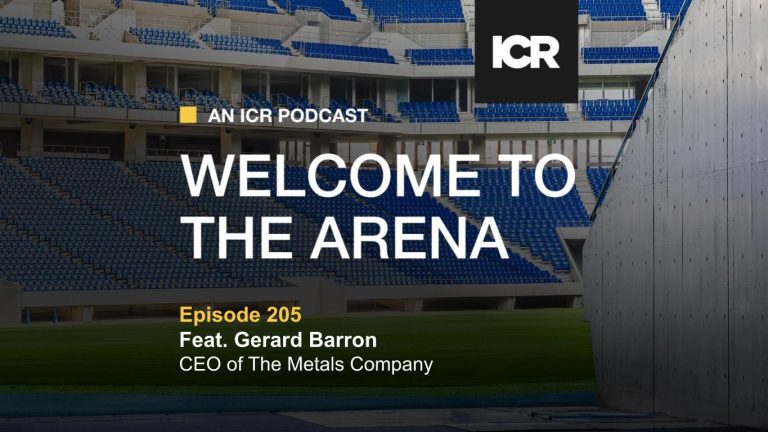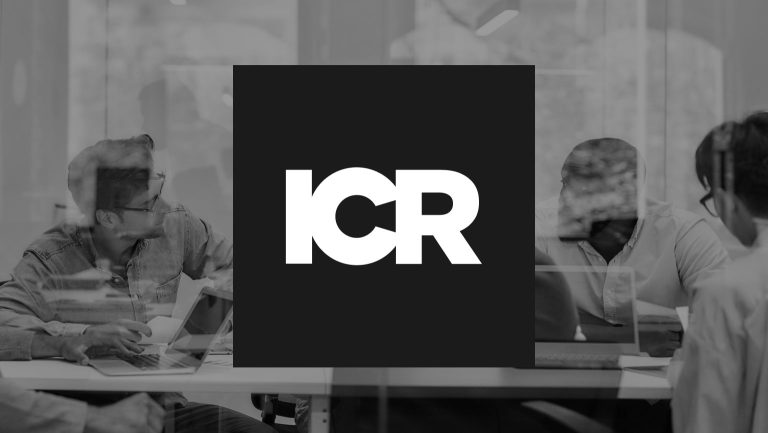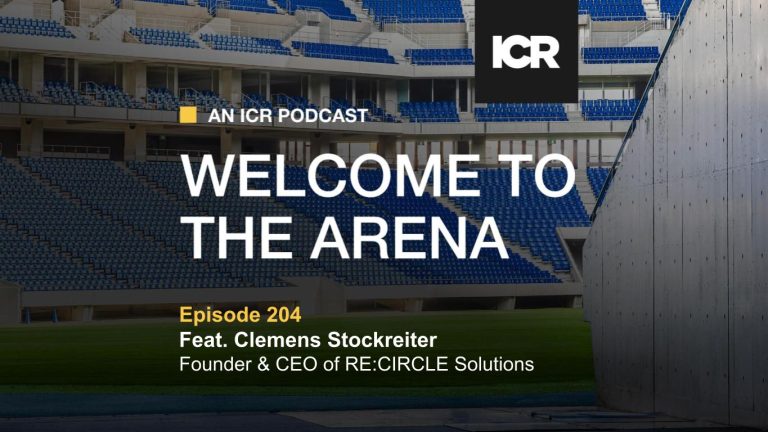In 1992, Starbucks had around 165 stores, a $250 million valuation, and an investor relations effort that barely stretched beyond Seattle. A few funds took the call. Most didn’t. Why bother with a regional coffee chain when McDonald’s was available?
Thirty years later, the investors who showed up early aren’t chasing meetings — they built relationships that still carry weight with the management team.
In today’s liquidity-obsessed, efficiency-driven equity market, meetings with small-cap companies are often the first to fall off the calendar when time and analytical bandwidth are stretched. The reasons are predictable — too illiquid, too lightly traded, below the mandate threshold, under-covered, or simply overlooked amid bigger priorities. But the reality is this: many of the best-performing names of the last 30 years started out exactly that way. They got big while others waited for someone else to take the first meeting.
In fact, on average, about two dozen Russell 2000 constituents “graduate” to the large-cap Russell 1000 each June reconstitution — 28 in 2024 and 24 in 2023 alone. A subset of these even secured a slot in the S&P 500. The opportunity set is much bigger than most realize. As of August 6, there were 1,863 companies listed on the NYSE or Nasdaq with market caps between $50 million and $1 billion. Nearly 500 of those sit between $500 million and $1 billion, and more than 1,000 fall between $100 million and $500 million. That’s a deep bench of underfollowed names — and many will either grow into mid-cap territory or disappear entirely. Knowing which are which starts with access.
I saw this dynamic firsthand early in my career. As a Small Cap Equity Research Associate at Credit Suisse, I worked with Lori Calvasina, then the firm’s SMID Cap Equity Strategist, and helped build our Small & Mid Cap Conference into a flagship event — one that became the firm’s best-attended. We designed it with intent: to surface new names and new ideas before the broader market caught on. That meant screening for companies that were under-followed by the sell-side and under-owned by the buy-side. The response was always consistent — portfolio managers valued access to overlooked stories when they were curated well and fit into a focused, efficient format. It was proof that when time is well-allocated, small-cap access delivers.
Small Now, Big Later
You don’t need a spreadsheet to prove that today’s small-cap afterthought is tomorrow’s big-name headliner. Anyone who’s been in this business more than a cycle has watched it happen in real time. Monster Beverage was a niche soda company when it launched its first energy drink in the early 2000s. Nvidia was a graphics chip maker for gamers before it became the engine of the AI economy. Even Apple was a turnaround story before it became a cultural force. And Lululemon — once a boutique yoga-wear brand — scaled into a $25 billion global leader in performance apparel.
These weren’t consensus buys early on. They were high-conviction calls made before the market caught up.These aren’t anomalies. They’re reminders. The early signals were there — explosive unit economics, fanatical customers, ambitious leadership. But they weren’t priced in yet. You had to meet them to see it. And more often than not, that meeting was with a founder or CEO willing to do 15 intros just to get one investor to pay attention.
Meetings Matter More at the Margins
Corporate Access for small caps isn’t about confirming a thesis — it’s about starting one. You’re not there to model margin expansion off consensus estimates. You’re there to assess the DNA of the leadership, the credibility of the roadmap, and the clarity of the execution plan.
Another difference: in large-cap meetings, you might get a perfectly capable IR lead, but not the C-suite. In small caps, you’re often sitting across from the CEO, the CFO — or both — ready to engage directly. In some cases, you’ll even see the chief technology or product officer in the room to make sure the nuances, the differentiators, and the customer insight make it into your hands. The access is higher touch, the messaging less filtered, and the opportunity to ask precise, operational questions far greater.
Most small cap CEOs are founder-operators. They know the product. They’ve sold to the customer. Some have had to revise the pitch deck after brushing up against a liquidity crunch or a tough quarter. They’re not reading from a script — they’re living it. That makes them both more volatile and more revealing. In small-cap meetings, sharp questions tend to draw out the edges of the real story. That’s the point.
Some of the most impactful investment decisions don’t start with a model — they start with a conversation. A one-on-one with a CEO can surface conviction and credibility that financials alone can’t provide.
Relationship Equity Isn’t Built in a Bull Market
There’s a reason management teams prioritize investors who showed up early. It’s not just appreciation — it’s pragmatism. When a company starts attracting broader buy-side attention, access gets tighter. Non-deal roadshow slots get allocated faster. Conference agendas fill up fast. Everyone wants a one-on-one — but only some get them.If you’ve been there from the beginning, asked real questions, offered candid feedback, and stayed in touch during the quieter quarters, your name’s on that shortlist. Access gets rationed, and you’re already inside the circle.
Corporate Access teams across the Street have seen this happen again and again. The investor who first took a meeting when the company was unknown becomes the one management calls when the story changes, or when a secondary is planned. That’s not luck. That’s relationship equity — and it compounds.
Common Excuses—and Why They Don’t Hold
“We can’t deploy enough capital to make it matter.”
Maybe not today. But when the market cap grows and liquidity improves, you’ll already have the conviction others are scrambling to build. Size follows familiarity. Early meetings build the foundation to scale later.
“No one covers it — there’s not enough info.”
That’s exactly the point. Sparse coverage means inefficiency. It means what you learn in the room isn’t already priced in. In the large-cap world, everyone’s seeing the same data. In small caps, a single meeting can give you something the market hasn’t absorbed yet. Ironically, MiFID II’s research unbundling made this easier: with paid-research budgets slashed, small-cap coverage has fallen roughly 30% since 2018, widening the info gap for anyone willing to pick up the phone.
“We’re bandwidth constrained.”
Everyone is. But carving out even 10% of your access bandwidth for small-cap meetings is a high-upside allocation. One winner makes up for ten no-thank-yous. These aren’t wasted hours — they’re venture-style call options on your next outperformer.
“Small caps are too risky for our mandate.”
Taking a meeting isn’t adding a position. It’s adding context. It’s keeping tabs on a potential disruptor. And it’s knowing the team long before the stock hits your market cap threshold.
Of course, not every cult story ages well. GoPro looked unstoppable in 2014; a single meeting would’ve flagged its thin patent moat and founder-control issues — red flags that later crushed the stock.
Don’t Just Extract—Engage
Small-cap management teams remember the investors who help them level up. Feedback matters. Ask for better disclosures. Push for more thoughtful KPIs. Share your expectations — especially if you’ve seen what resonates with institutional holders in the space. That kind of engagement doesn’t just sharpen messaging, it builds trust.
I often remind investors: many small-cap executives bring deep operating expertise in a specific vertical or customer segment — and the read-through to other names in your portfolio can be meaningful. But that’s not the only reason to take the meeting. These aren’t just reference points — they’re companies trying to scale, and your engagement can help shape how they communicate to the broader market.
Paul Karos, retired portfolio manager for Millennium Partners and Whitebox Advisors, and former President of U.S. Bancorp and Piper Jaffray’s Investment Banking and Equities Division, underscored this point: “Because competitive dynamics are changing so quickly in today’s fast-moving technology developments, taking small-cap meetings can give you an important sense of how strong the strategic moat is for the companies in your portfolio. Obviously, you may find a good investment idea in taking small-cap meetings, but you will also see how real the emerging threats are to core holdings in your portfolio.”
That trust often starts with the IR team. They shape the narrative, manage access, and carry investor perspectives back into the room where decisions are made. When a conversation is insightful, IR uses it. They reference it. They build internal credibility with the C-suite by highlighting the investors who are doing the work. In that sense, showing up sharp and constructive doesn’t just get you remembered — it gets you championed.
When the company grows — and some will — you’ll already be on the inside of the access equation. Not because you asked for the meeting. Because you made it matter.
The Next Big Story Is Already on the Calendar
Somewhere this month, a founder-CEO is walking into an investor meeting. They are under $500 million in market cap, under-covered by the Street, and still figuring out the right slide order. But the bones of the business are there. The upside is real.
“I only took the meeting with Electro Optic Systems — a very small-cap Australian defense company with a market cap of about A$100 million at the time — to fill a conference slot,” said Jonathan Art of Ascan Partners, formerly the technology portfolio manager of Federated Kaufmann Fund. “The company was just coming out of a near-death experience, but the CEO turned out to be an extraordinary general manager with significant leadership experience at Rheinmetall and Thales. I bought the stock on the turnaround, with the optionality of a laser weapon under development.”
Last week, the company announced its first laser weapon contract — over A$100 million with a NATO member nation — and the stock is up more than five-fold in under two years. Art’s experience is one of many where a meeting that almost didn’t happen became a meaningful source of returns — and a reminder that the right conversation can change the investment story.
Many investors will pass. One or two won’t. And in five years, when that company is presenting at every bulge-bracket conference and taking victory laps on earnings calls, those early investors won’t be just another meeting request. They’ll be the call that gets returned. The ones who saw it before the spotlight. The ones who got the seat — and kept it.
Block two hours a month for sub-$1 billion names. If you need a place to start, contact the ICR Investor Access team.



